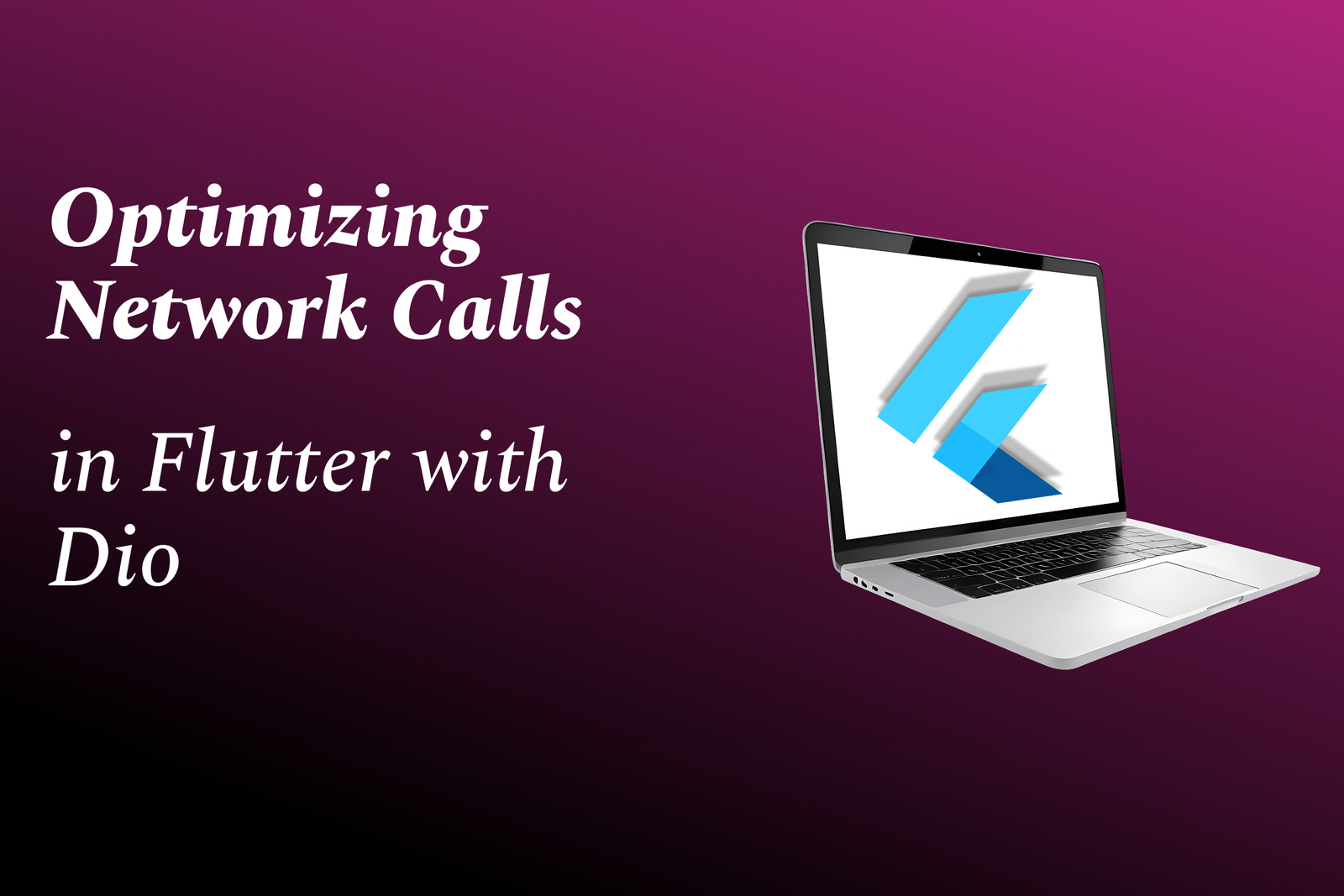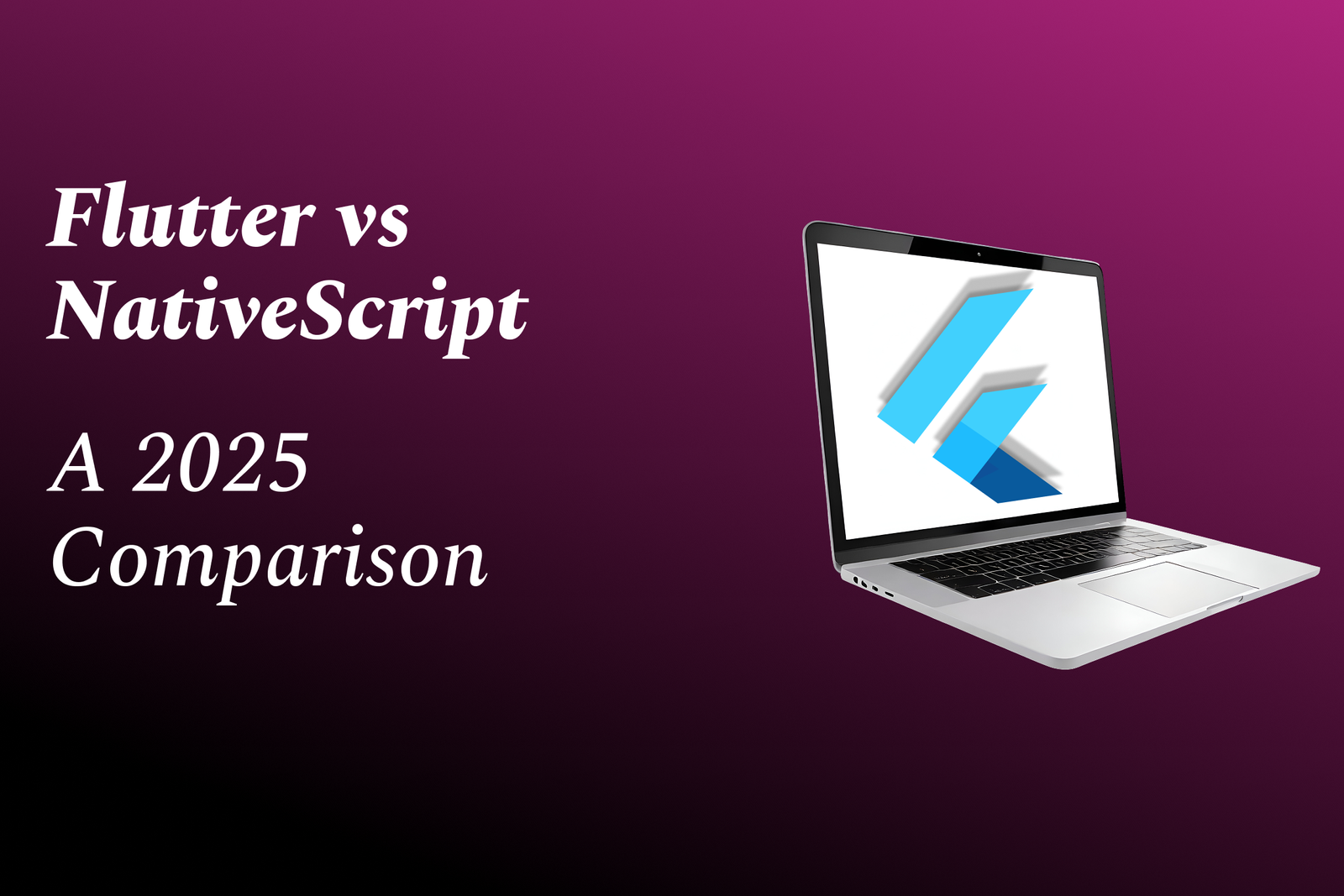Optimizing Network Calls In Flutter With Dio
Optimizing network calls in Flutter with Dio means using Dio’s rich HTTP client features—centralized configuration and interceptors for headers, auth, logging and error handling; request cancellation, timeouts and concurrency control; retry strategies (exponential backoff); and response caching/compression—to reduce latency, save bandwidth and improve reliability. By encapsulating API logic in a configured Dio instance, applying retries and backoff, caching frequent responses, and handling errors consistently, apps become faster, more resilient and easier to maintain—especially important for real-time project work and production-ready certifications like those at JustAcademy.
Optimizing Network Calls In Flutter With Dio
Optimizing network calls in Flutter with Dio means using Dio’s centralized configuration, interceptors, cancellation, timeouts, retries and caching to reduce latency, save bandwidth and handle errors consistently; this makes apps faster, more reliable and easier to maintain—especially important for real-time projects and production-ready certifications offered by JustAcademy.
To Download Our Brochure: **https://www.justacademy.co/download-brochure-for-free
**
Message us for more information: **https://api.whatsapp.com/send?phone=919987184296
**
Optimizing network calls in Flutter with Dio means using Dio’s centralized configuration, interceptors, cancellation, timeouts, retries and caching to reduce latency, save bandwidth and handle errors consistently; this makes apps faster, more reliable and easier to maintain—especially important for real time projects and production ready certifications offered by JustAcademy.
Course Overview
A compact, hands-on course teaching how to build efficient, reliable Flutter network layers with Dio—covering configuration, interceptors, error handling, retries, timeouts, caching, cancellation, performance tuning and testing—includes real-time projects and a JustAcademy certification.
Course Description
Master Optimizing Network Calls in Flutter with Dio: configure clients, interceptors, retries, caching, timeouts and debugging through hands-on projects and earn a JustAcademy certification.
Key Features
1 - Comprehensive Tool Coverage: Provides hands-on training with a range of industry-standard testing tools, including Selenium, JIRA, LoadRunner, and TestRail.
2) Practical Exercises: Features real-world exercises and case studies to apply tools in various testing scenarios.
3) Interactive Learning: Includes interactive sessions with industry experts for personalized feedback and guidance.
4) Detailed Tutorials: Offers extensive tutorials and documentation on tool functionalities and best practices.
5) Advanced Techniques: Covers both fundamental and advanced techniques for using testing tools effectively.
6) Data Visualization: Integrates tools for visualizing test metrics and results, enhancing data interpretation and decision-making.
7) Tool Integration: Teaches how to integrate testing tools into the software development lifecycle for streamlined workflows.
8) Project-Based Learning: Focuses on project-based learning to build practical skills and create a portfolio of completed tasks.
9) Career Support: Provides resources and support for applying learned skills to real-world job scenarios, including resume building and interview preparation.
10) Up-to-Date Content: Ensures that course materials reflect the latest industry standards and tool updates.
Benefits of taking our course
Functional Tools
1 - Dio HTTP client
Dio is the central networking library taught in this JustAcademy module and students learn its full API surface for creating robust HTTP clients.
The training covers request/response handling, custom Options, multipart uploads, streaming, and timeout strategies.
Hands on labs demonstrate configuring BaseOptions, interceptors, and per request cancellation tokens to optimize latency and resource use.
Participants implement real world patterns like centralized error handling and safe retry flows using Dio in Flutter apps.
By the end, learners can architect a maintainable Dio based network layer for production mobile applications.
2) Dio interceptors and token refresh patterns
Interceptors let students inject logic for logging, authentication, caching and error normalization centrally inside Dio.
The course walks through building request, response and error interceptors and composing them to handle token expiry and automatic refresh.
Practical exercises show chaining asynchronous refresh calls, queueing outgoing requests during refresh and avoiding race conditions.
Students implement retry after refresh semantics and idempotency considerations for safe repeated calls.
These interceptor patterns drastically reduce duplicate code and make secure API integration predictable.
3) pretty_dio_logger and logger package
Logging is critical for debugging and performance tuning, and the module uses pretty_dio_logger to format HTTP traffic clearly.
Students learn to integrate the logger package for multi level logs, structured messages and environment driven verbosity.
Hands on labs cover redacting sensitive headers/bodies, conditional logging in debug builds and exporting logs for analysis.
This tooling helps learners trace slow endpoints, inspect payloads and validate caching or retry behavior during the project.
Graduates leave able to set up readable, secure logging pipelines for client side networking.
4) dio_http_cache and response caching strategies
The course teaches response caching techniques using dio_http_cache and custom cache layers for mobile constraints.
Students implement cache control strategies, stale while revalidate, and selective caching for GETs while avoiding accidental caching of sensitive endpoints.
Workshops cover cache invalidation, ETag/If None Match workflows and hybrid in memory + persistent caches for offline support.
Learners measure bandwidth savings and latency improvements through before/after scenarios as part of the real time project.
These patterns reduce server load and improve perceived app performance, key outcomes of the training.
5) dio_retry and exponential backoff
Robust mobile networking needs resilient retry strategies; the module teaches using dio_retry and custom backoff implementations.
Students implement exponential and jittered backoff, max retry policies and classification of idempotent vs non idempotent requests.
Exercises simulate flaky networks and transient server errors to verify retry effectiveness without amplifying server load.
The training emphasizes observability, so retries are instrumented and metrics captured for later tuning.
Learners graduate knowing how to prevent cascading failures and improve success rates under poor connectivity.
6) Retrofit like code generation with retrofit_generator
To reduce boilerplate, the course covers Retrofit style declarative APIs using retrofit_generator with Dio as the underlying transport.
Students define annotated interfaces and generate type safe clients, improving maintainability and reducing runtime errors.
Practical sessions include error mapping, custom converters and plugin points for interceptors or retry logic.
This approach speeds development of consistent clients across multiple services while preserving fine grained control via Dio.
Graduates can set up automated client generation pipelines that integrate with CI for contract driven development.
7) json_serializable and model serialization
Accurate, performant JSON (de)serialization is taught using json_serializable to generate explicit, null safe converters.
Learners build typed models with fromJson/toJson methods, handle nested objects, custom date formats and defensive parsing.
The module contrasts manual parsing pitfalls with generated code for performance and maintainability in large projects.
Students integrate serialization with Retrofit generated clients and demonstrate stable model evolution across API versions.
This tooling reduces runtime crashes and simplifies these students’ portfolio projects for employers.
8) freezed for immutable models and unions
Freezed is introduced to produce immutable data classes, copyWith helpers and sealed unions for robust error/result handling.
The training demonstrates using unions to represent network states (loading/success/error) cleanly in UI and business logic.
Students practice pattern matching and JSON integration, making state handling explicit and test friendly.
Freezed improves maintainability, reduces accidental state mutations and pairs well with Bloc or Provider in Flutter apps.
Adopting these patterns helps students build predictable, testable networked features for real projects.
9) build_runner and code generation tooling
Code generation is orchestrated using build_runner, covered in the course so students can automate model, API and helper generation.
Lessons include build modes, watching changes, resolving conflicts and integrating generation as part of CI pipelines.
Practical labs show combining multiple generators (json_serializable, retrofit_generator, freezed) and handling build time errors.
Students learn best practices for generated code hygiene and commit strategies, avoiding accidental check ins of generated artifacts.
This tooling accelerates development and enforces consistency across team projects taught in the program.
10) flutter_secure_storage for tokens and secrets
Secure storage of tokens and credentials is required for production apps and is taught using flutter_secure_storage.
Students implement encrypted token storage, refresh safe persistence and platform considerations for Android and iOS.
Workshops cover migrating tokens, secure logout flows, and protecting sensitive cache entries from accidental leaks.
The course emphasizes threat models, keychain/Keystore differences and secure lifecycle handling for mobile sessions.
This ensures students can deliver security minded networking modules for employer ready portfolios.
11 - Local persistence: Hive, SharedPreferences and sqflite
Offline support and caching require local databases; the module covers Hive for key value, SharedPreferences for small flags and sqflite for relational needs.
Students learn choosing the right persistence for response caching, offline queues and user settings tied to network behavior.
Hands on tasks include schema migrations, compacting caches and coordinating persistent queues with Dio request dispatch.
These skills enable resilient offline first features and improve UX under intermittent connectivity in student projects.
Graduates can design balanced persistence layers that compliment optimized network strategies.
12) http_mock_adapter and API mocking for Dio
Testing network logic without hitting real servers is taught using http_mock_adapter to simulate Dio responses deterministically.
Students create mock scenarios for success, error and edge cases, validating interceptors, retry logic and cache interactions.
Labs show mapping route patterns, response delays and header based conditions to mimic real world API behavior.
This approach allows fast, reliable unit and widget tests for networking code in CI without external dependencies.
By completion, students can confidently test complex network scenarios and ship reliable features.
13) Mocking frameworks: Mockito and Mocktail
Unit and integration testing practices include using Mockito or Mocktail for creating mocks and stubs in Dart.
The curriculum covers best practices for mocking Dio clients, repository layers and platform plugins tied to networking.
Students write tests that assert request composition, header propagation and state transitions without brittle implementation coupling.
Exercises emphasize readable, maintainable test suites that keep pace with evolving API contracts.
These testing skills are essential for professional quality apps showcased in student portfolios.
14) Postman, Postman Mock Server and Newman
API exploration and contract testing use Postman to inspect endpoints, run collections and create mock servers for front end development.
Students learn to export collections, automate contract checks with Newman and synchronize mocks with backend teams.
Practical labs demonstrate using Postman environments to test different stages (dev/staging/prod) and seed predictable responses.
This tooling helps students prototype client behavior before backend availability and validate integration in CI.
Familiarity with Postman prepares learners for common industry workflows during internships and jobs.
15) Insomnia and Swagger/OpenAPI tooling
Insomnia and OpenAPI/Swagger tooling are taught for interactive API documentation, schema validation and automated client generation.
Students author or import OpenAPI specs, generate typed stubs and verify that DTOs match contract expectations.
The course highlights integrating API schemas into the Retrofit/codegen pipeline to reduce client server mismatches.
Workshops show using spec driven mocks to support frontend development in parallel with backend delivery.
Mastering these tools equips students to collaborate effectively with backend teams on stable APIs.
16) Mock servers: Mockoon and WireMock
Local mock server tools like Mockoon and WireMock enable students to run complete API backends locally for end to end testing.
Training includes scripting scenarios, dynamic response templating and simulating latency or error rates to stress client code.
Students use mock servers to validate offline flows, cache priming and complex authentication sequences during the project.
This practical setup accelerates development and reduces dependency on backend availability for student deliverables.
Working with mock servers embeds realistic integration practices into portfolio projects.
17) Flutter DevTools network profiler and performance tooling
Performance analysis uses Flutter DevTools’ network profiling and the performance overlay to find bottlenecks in networking flows.
Students trace request timings, CPU usage during parsing and UI jank caused by synchronous work on the main isolate.
Workshops demonstrate moving heavy parsing to isolates, batching requests and streamlining JSON handling to reduce frame drops.
Learners measure improvements and iterate on network strategies to hit mobile performance budgets in their projects.
These diagnostics skills are vital for shipping smooth, production grade apps.
18) Charles Proxy, Fiddler and network inspection
The course covers using Charles Proxy or Fiddler to intercept and analyze HTTP/HTTPS traffic from devices and emulators.
Students learn configuring SSL certificates, inspecting TLS details, replaying requests and simulating network throttling.
Practical exercises show diagnosing certificate pinning issues, header mismatches and third party SDK traffic.
This low level visibility helps students debug integration issues that higher level tools cannot reveal.
Mastering proxies equips learners to resolve subtle connectivity bugs during development and testing.
19) Monitoring and observability: Sentry, Firebase, Datadog
Monitoring network related errors in production is taught using Sentry, Firebase Crashlytics and Datadog APM integration.
Students instrument network layers to capture slow endpoints, repeated failures and contextual breadcrumbs for triage.
Assignments include creating alerts for high error rates, visualizing latency distributions and linking issues to release metadata.
These observability practices help learners understand real world operational concerns for their apps.
Implementing monitoring makes student projects demonstrably production ready and employer attractive.
20) CI/CD and automated testing: GitHub Actions and Codemagic
The curriculum integrates CI pipelines with GitHub Actions or Codemagic to run unit, widget and integration tests including mocked network suites.
Students automate code generation, linting, testing and artifact builds so networking code is validated on every change.
Workshops show running Postman/Newman collections, contract validation and deploying staging builds for manual QA.
This end to end automation ensures networking optimizations are repeatable, preventing regressions during team delivery.
Graduates leave with a replicable CI setup to showcase in interviews and production projects.
21 - WebSockets and real time tools: web_socket_channel
Real time communication patterns are explored using web_socket_channel and related libraries to complement RESTful optimizations.
Students build reconnection strategies, multiplexing, backpressure handling and graceful degradation to polling when needed.
Exercises demonstrate integrating real time streams with state management, caching recent messages and handling network flaps.
This expands optimization techniques beyond HTTP and prepares learners for chat, live updates and streaming features.
Understanding both REST and real time approaches rounds out students’ networking skill set for complex apps.
22) Contract testing and OpenAPI generator
Contract testing using Pact concepts and generating clients via OpenAPI Generator are covered to prevent mismatches with backend teams.
Students practice consumer driven contract tests and automate client regeneration against updated schemas.
Labs highlight versioning strategies, backward compatible changes and migration paths for breaking contract updates.
This discipline reduces integration churn and promotes reliable delivery for multi team projects taught at JustAcademy.
Adopting contract tooling gives students a professional workflow to include in their portfolios.
23) GraphQL clients and caching (graphql_flutter, Artemis)
Teach GraphQL query/mutation/subscription patterns, normalized caching, and schema aware client generation.
Hands on projects show local cache updates after mutations, pagination, and error handling for partial responses.
Students learn when GraphQL is appropriate versus REST and integrate GraphQL clients into real time app features.
24) gRPC and protocol buffers for mobile
Introduce gRPC/mobile (gRPC Web where applicable) and protobufs for efficient, typed RPCs and streaming.
Labs cover code generation, bidirectional streams, and connectivity strategies for intermittent networks.
This module is ideal for high throughput or low latency features like telemetry or real time syncing.
25) OAuth 2.0, OpenID Connect and PKCE flows
Deep dive on secure authentication flows: Authorization Code with PKCE, implicit vs. refresh tokens and session management.
Students implement secure sign in, consent handling, token storage, and refresh logic with production threat models.
Workshops include integrating third party providers and automating flows in mobile friendly ways.
26) Mutual TLS, certificate pinning and advanced TLS practices
Teach platform specific TLS configuration, certificate pinning strategies and handling rotation safely.
Practical labs use Charles/WireMock and CI mocks to validate pinning behavior without blocking development.
Students learn to balance security with maintainability to defend against MITM attacks in production apps.
27) Resumable and chunked file uploads (TUS, multipart)
Cover robust large file upload techniques: chunking, resumable protocols (TUS), and server side stitching.
Hands on tasks implement pause/resume, progress reporting and integrity checks across flaky networks.
These patterns enable reliable media uploads in real world apps and are part of project deliverables.
28) Client side rate limiting, throttling and backpressure
Teach client side safeguards: request throttling, debounce/batch patterns and honoring server rate limit headers.
Labs simulate strict rate limits and error responses to build graceful degradation and retry humility.
Students learn to prevent self induced denial by coordinating retries and concurrency.
29) Circuit breakers and bulkhead patterns
Introduce fault tolerance patterns (circuit breaker, bulkhead, fallback) to avoid cascading failures.
Students implement libraries or custom middleware to isolate flaky endpoints and provide graceful fallbacks.
This strengthens app resilience under degraded backend conditions demonstrated in capstone projects.
30) OpenTelemetry and distributed tracing for mobile
Instrument network flows with OpenTelemetry to correlate client side traces with backend spans.
Practical exercises include exporting traces, visualizing latency hotspots and linking traces to error reports.
This brings enterprise level observability into student projects for production readiness.
31 - GDPR, privacy by design and data minimization
Cover legal/regulatory impacts on networking: consent, data minimization, retention and secure transmission.
Students implement consent driven telemetry, selective logging and privacy friendly caching strategies.
Modules emphasize documenting choices for audits and employer facing portfolios.
32) API pagination, sorting and cursor strategies
Teach efficient pagination schemes (offset vs cursor), sorting, and client cache reconciliation for infinite lists.
Hands on labs implement smooth scrolling, gap free UI updates and sync semantics with server cursors.
This improves UX for feed heavy apps featured in student projects.
33) Image and media optimization for networks
Explore adaptive image formats, responsive sizing, WebP/AVIF usage and client side lazy loading.
Students build pipelines that request size specific assets and measure bandwidth/CPU trade offs.
Optimizations reduce load times and data consumption, key metrics in capstone evaluations.
34) CDN, edge caching and cache invalidation strategies
Explain how CDNs and edge logic interact with mobile clients, cache headers and cache purging workflows.
Labs simulate versioned assets, cache busting and SSE/Webhook driven invalidation for near real time updates.
Students learn to coordinate client behavior with backend/CDN policies to ensure freshness.
35) Backend for Frontend (BFF) and API aggregation patterns
Teach designing BFF layers to tailor APIs per client, reduce chattiness and centralize protocol translation.
Projects include building lightweight BFFs that aggregate microservices and enforce client side security.
This pattern simplifies mobile networking and is demonstrated in integration exercises.
36) Energy aware networking and battery optimization
Cover scheduling network work, batching, opportunistic sync and respecting Doze/Background limits on platforms.
Students profile battery vs. network trade offs and implement battery friendly sync strategies.
These considerations are critical for user retention and real world app quality.
37) Network virtualization, chaos testing and SRE practices
Introduce chaos engineering for mobile: simulated packet loss, server failures and latency spikes in tests.
Hands on labs run fault injection suites to validate retry, fallback and offline behaviors under stress.
This builds confidence that student apps survive real world network turbulence.
38) API security testing and penetration basics
Teach automated API security scans, fuzzing common endpoints and validating authorization scopes.
Students practice threat model audits, use tools to find injection or ACL flaws and remediate issues.
Security validation is integrated into CI for certified JustAcademy projects.
39) Graphical network debugging and UX for connectivity states
Design graceful UI/UX flows for connectivity: offline indicators, sync status, resumable actions and user facing diagnostics.
Workshops combine network logic with accessibility and localized messaging to make failures actionable.
This ensures networking features translate into robust user experiences showcased in portfolios.
JustAcademy will integrate these topics into advanced modules and capstone projects so learners can earn certifications demonstrating end to end, production ready networking expertise. If you want additional topics (e.g., more security deep dives, platform specific network optimizations, or domain specific connectors), specify the focus and more points will be added.
Browse our course links : https://www.justacademy.in/all-courses
To Join our FREE DEMO Session: https://www.justacademy.in/register-for-course-demo
This information is sourced from JustAcademy
Contact Info:
Roshan Chaturvedi
Message us on Whatsapp: https://api.whatsapp.com/send?phone=919987184296
**Email id: mailto:info@justacademy.co
**
https://www.justacademy.co/blog-detail/flutter-developer-salary-2025:-a-global-comparison
https://www.justacademy.co/blog-detail/flutter-web-seo-guide:-best-practices-for-ranking
https://www.justacademy.co/blog-detail/flutter-web-vs-spas:-a-performance-comparison
https://www.justacademy.co/blog-detail/flutter-test-environments:-a-setup-guide
https://www.justacademy.co/blog-detail/flutter-impeller-vs.-skia:-a-deep-dive-into-the-new-rendering-engine
Optimize Flutter Network Calls with Dio: Caching, Retries & Performance Best Practices
Flutter Dio Networking Guide: Caching, Retries, Error Handling & Performance Best Practices
Mastering Flutter Networking with Dio — Performance Optimization, Caching & Error Handling Best Practices
Ultimate Guide to Optimizing Flutter Network Calls with Dio: Caching, Interceptors & Error Handling










